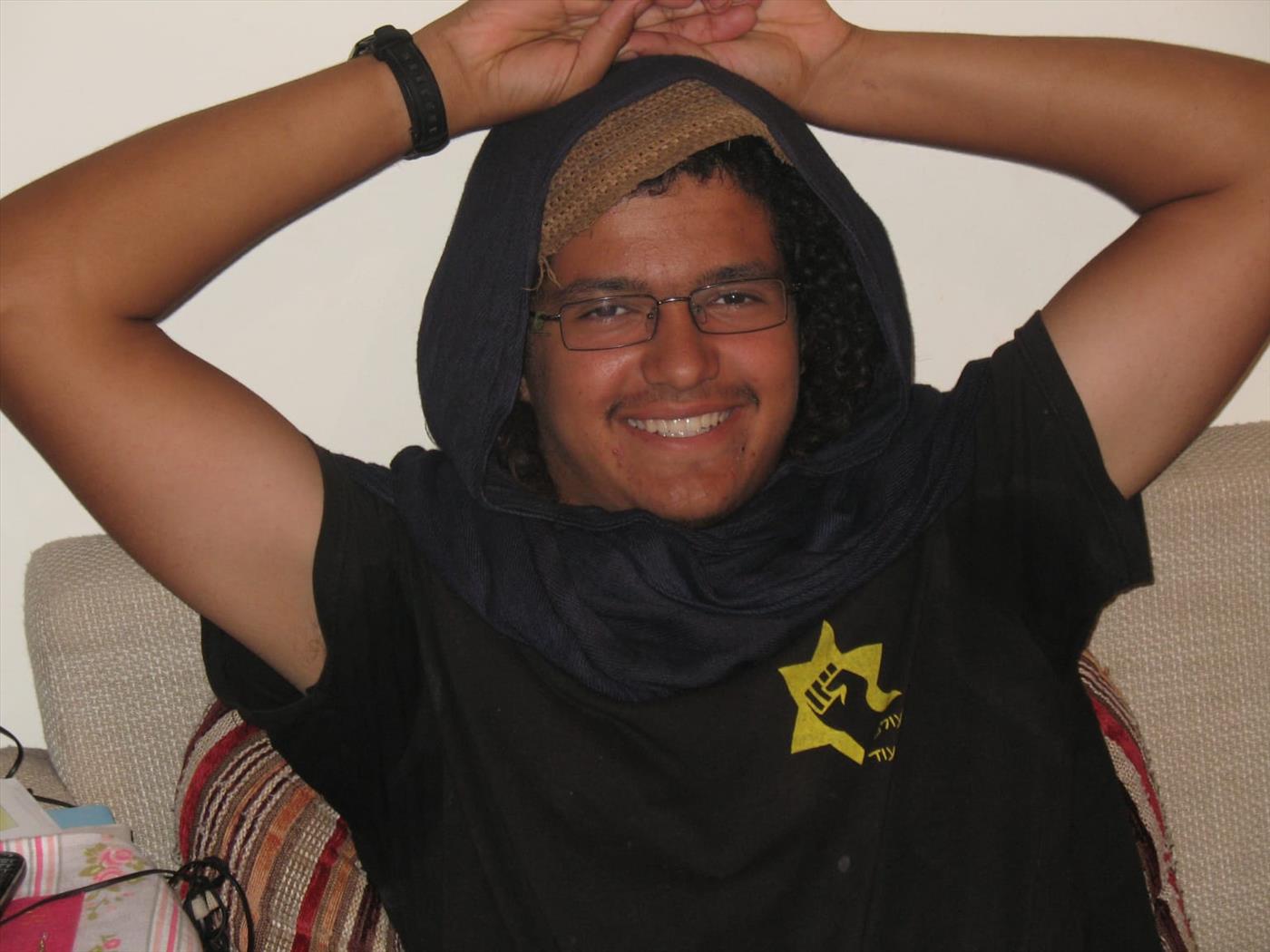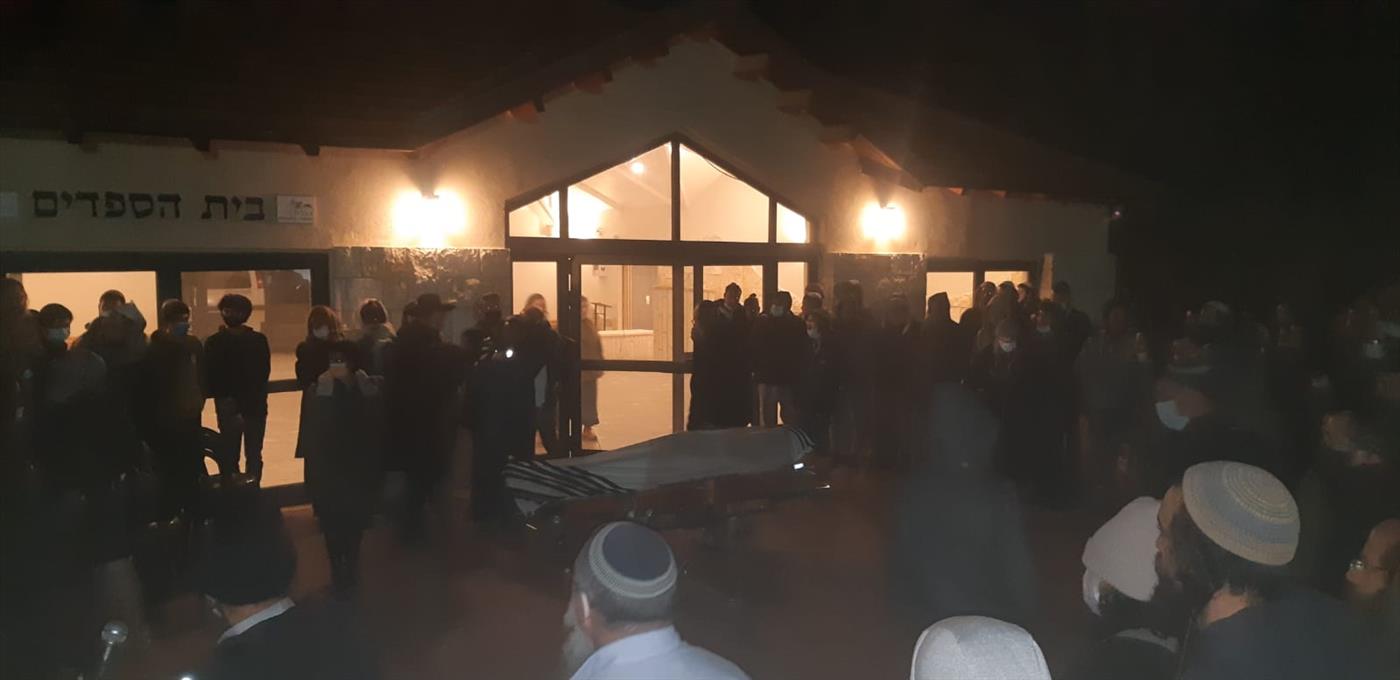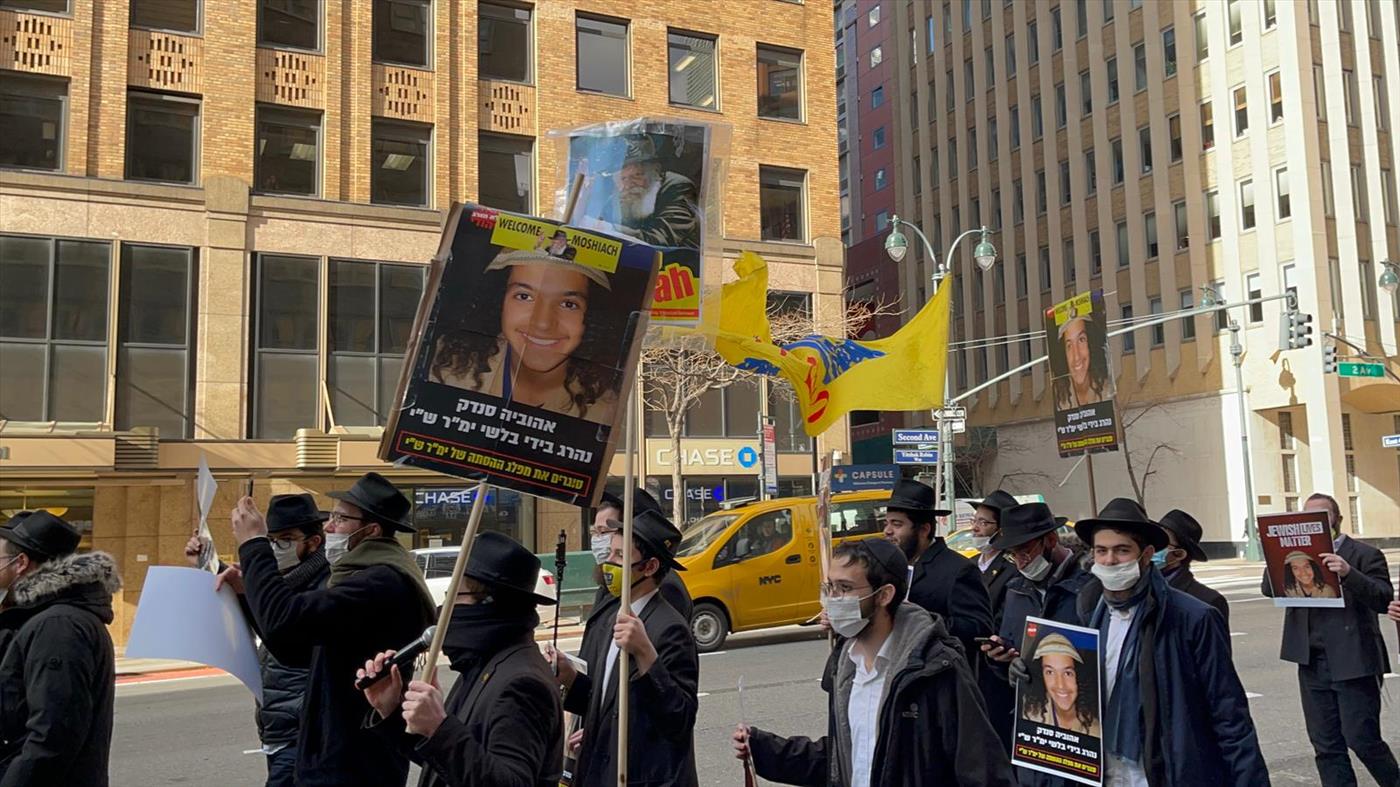
The Jewish Press
On the 21st of December, the Israel Police received a call informing them that young Jewish settlers in a car were hurling stones at Arab vehicles traveling along the Kochav HaShachar road. Detectives from the Police Investigation Division of Judea and Samaria were dispatched to the scene and a car chase ensued. According to attorneys for the Honenu Legal Defense Organization, near the Mikmash Junction, the speeding police vehicle intentionally rammed into the rear of the car filled with 5 young Jews, known as members of the “hilltop youth movement.” Four were injured and sixteen-year old Ahuvia Sandak was killed as their car overturned and tumbled off the road. Immediately, the area was closed to settler representatives, Zaka emergency teams, and reporters. Police held the four surviving passengers of the car in custody for three days, interrogating them on suspicion of manslaughter over the death of their friend. An eruption of spontaneous anger and protest spread through the Yesha community with demonstrations all over the country. This Motzei Shabbat, some 2000 people protested outside Police National Headquarters in Jerusalem, demanding that the police officers involved in the case be investigated on suspicion of murder. The police used water cannons to disperse the crowds of young protestors who attempted to block traffic. For the first time on Sunday afternoon, the last day of the shiva, a representative of the government, Public Security Minister Amir Ohana, visited the bereaved family. Except for Bezalel Smotrich, politicians on all sides of the political map have been uncharacteristically silent. On Sunday evening, a violent demonstration was held at the entrance to Jerusalem, pitting hilltop-youth supporters against the police. In order to understand the great tension and emotion surrounding the tragic death of the hilltop youth, Ahuvia Sandak, the Jewish Press presents its readers with reactions to the killing which appeared in the Hebrew press, along with an interview with longtime settlement activist, Daniella Weiss.
A majority of media outlets reported that Knesset Member, Bezalel Smotrich, wrote an “urgent” letter to the head of the Department of Police Investigations, demanding that the police officers involved in the killing be investigated immediately, not by the police, but rather by an independent inquiry. "I myself experienced the police’s attempt at the scene of the incident to keep everyone away, including me as a Member of Knesset with immunity, in what appeared to be an attempt to obscure the clear evidence in the area that the police vehicle deliberately hit the car filled with boys," he wrote.

The Srugim news website reported that HaRav Ariel Bareli, the Chief Rabbi of Bet-El, was asked if it was proper to demonstrate against the police over the death of Ahuvia Sandak. “It is very important to protest against the cruel and unbridled methods which the Israel Police Department employs in hounding the hilltop youth, methods which have brought about the death of Ahuvia Sandak,” he replied. “His blood cries out to us from the depths of Eretz Yisrael, demanding that we do whatever we can to end this criminal behavior of the authorities, and to oust the officers who spilled his innocent blood from the ranks of Mishetret Yisrael. Certainly, throwing stones at the vehicle of any motorist is a forbidden act, but the main focus of executing the law must be directed toward the unrestrained Arabs who threaten our lives on a day-to-day basis.”
Writing on his Facebook page, the journalist, Yedidiya Meir, quoted from an email he received before Shabbat from a friend of Ahuvia who visited the small hilltop outpost of Maoz Ester, where the boy lived:
“Yesterday I drove out to Moaz Ester with some hilltop-youth veterans to sit with the young people there, the friends of Ahuvia, in his wooden shack surrounded by mud. His friends are broken and shattered. Ahuvia was the backbone of the place. He was only sixteen-and-a-half years old, but already had learned ‘issur v’heter’ at the Kochav HaShacher Yeshiva, while doing guard duty here at night, and while cultivating groves of trees, and pasturing sheep, to defend the area from Arab encroachment. He knew that if Jews didn’t settle on these hillsides, then Arabs would. Like an entire army brigade, he and his handful of friends were keeping hundreds of dunams under Israeli control. All with utter faith in the Almighty. Ahuvia had a bookcase by his bed filled with holy texts. On the frame of the bookcase, he pinned a handwritten page with his daily schedule of study for the month, which included five chapters of Tanach with hazara; a chapter of the Mishna Shvi’it with hazara: a page of Tractate Berachot; two sub-chapters of the Kitzur Shulchan Aruch; and a sugiah in Rav Kook’s aggadic exegesis of the Talmud, ‘Ein Ayah.’ At the bottom of the page, he wrote: ‘In the Name of Hashem, we will endeavor and succeed!!’

“His friends told us that Ahuvia dreamed of establishing a kollel in the beit midrash he built in Maoz Ester. He wanted the hilltop to be a beacon of Torah. In the middle of the discussion, one of his friends moaned, ‘Shabbat is just a few hours away. Without Ahuvia, who will organize everything? Ahuvia always bought the food, cooked, made sure we would have a minyan and Sefer Torah.’ I thought to myself, how could such a sweet-looking young fellow take all of this upon his shoulders? Instead of surfing on the Internet and being connected by his veins to a smartphone like so many other teenagers, this kid was inseparably connected to Eretz Yisrael, to the mud of Maoz Ester, to the Redemption of the Nation and to the Torah. Many people have asked me about the hilltop youth, assuming that they are merely a wild bunch of teens at risk. It seems to me that Ahuvia’s learning schedule, which he diligently adhered to, is an answer worth more than a thousand words.”
Bentzi Gupstein of the Otzma Yehudi Party heads the Lehava organization which fights against intermarriage in Israel. He told Arutz 7 News: “Just the way that Yehuda took responsibility for the welfare of his brother, Benjamin, and for the wellbeing of his father, Yaacov, Jews have to be responsible for the lives of fellow Jews. This includes the hilltop youth as well. Unlike other teenagers who are mostly concerned with themselves, Ahuvia Sandak busied himself with the settlement and building of Eretz Yisrael. The police claim that the incident occurred after Ahuvia and his friends were seen throwing stones at Arab cars along the highway. This claim has not yet been proven. In contrast, it is well known and documented that Arabs throw stones at Jewish motorists a dozen times each day. When was the last time that you heard about Israeli police chasing after Arab stone throwers? Ahuvia’s blood cries out from the earth. What other public official, except Bezalel Smotrich, has protested? With a few notable exceptions, too many Rabbis have also kept silent, from both the Haredi community and among the Dati-Leumi. A Jewish youth is killed by the Israeli police, who should have protected him, and the leaders of the country keep quiet. Among the many things demanding rectification surrounding the killing of this young boy is the need to sharpen the feeling of mutual responsibility, one for the other, that Jews should share, after the example of Yehuda in the Torah portions which we have been reading. This is a blanket responsibility encompassing all Jews, whether he be a hilltop youth, a Haredi Jew, or someone whose ideologies and opinions we don’t share. Like Joseph, Yehuda, Reuven, and Benjamin, when all is said and done, we are brothers.”
A range of Dati-Leumi websites reported that Rabbi David Fendel, Rosh Yeshiva of the Yeshivat Hesder of Sderot, led his students in a demonstration outside the local police station, demanding the closure of the “Jewish Department” of the Israel Secret Service and the closure of Police Investigation Division of Judea and Samaria. “We are the hilltop youth!” he declared. “We love Eretz Yisrael. The youth on the hillsides are our emissaries. They are soldiers of the Nation on the front of the battle. They are redeemers of the Land of Israel. Learn about the splendid person Ahuvia was, about his love and dedication to every parcel of Eretz Yisrael, a trait shared by his friends. We have gathered here to give them the honor they deserve and to thank them for their extraordinary devotion to our Land. When a murder is committed accidently, according to Jewish Law, the surrounding circumstances must be carefully investigated. If there are signs that hatred existed before the killing, then maybe it was not really accidental. Maybe the hilltop youth were targeted in an excessive way? If they were the target of hatred, then we are targeted as well. We are one with them. Why doesn’t the Sderot police stand up and protest and cry out with us?! You have murdered one of us! Ask for forgiveness! Shut down the insidious ‘Jewish Department’!”
In a poignant essay in the HaKol HaYehudi website, Meir Ettinger, a leader of the hilltop youth, extends the blame for the killing of Ahuvia Sandak to leaders of the Yesha establishment and to Dati-Leumi Rabbis, many of whom spoke derogatively in the past about the new wave of settler youth, labeling them irresponsible and a danger to the settlement enterprise for their wanton acts of revenge against Arabs which triggers, in their opinion, negative publicity over the settlement movement in general. Ettinger writes:
“The responsibility for this terrible murder is not hanging only on the necks of the killers enlisted in the State of Israel’s largest criminal organization (Ed. The Israeli Police), but also on the people who allowed the incitement against the hilltop youth to continue and increase, leading to the destruction of their homes, to their arrests and torture, and (now) to the murder of a brave and saintly youth who met his death at the hands of criminals who don’t know left from right, and who have no values or goals in their lives other than to receive their monthly salaries for the crimes they committed… The responsibility for the killing of Ahuvia Sandak also lies with the Rabbis who were afraid to sign on petitions to stop the defamation and hounding of the hilltop youth, Rabbis who were deaf to the cries to stop their physical harassment by the police, lest, Heaven forbid, they be accused of supporting the hilltop youth, and be accused of incitement (against Arabs) themselves. Instead they kept silent in the face of the witch hunt and the outcry in the media to put an end to the hilltop youth, and thereby they allowed the shedding of this blood. It is not enough that they face up to their accountability, like Joseph’s brothers who admitted, ‘Yet we are to blame,’ – rather we must examine the trail of development that allowed this climate of enmity to develop, leading to this spilling of their blood. It is a climate which surrendered to lies, which didn’t find the courage to speak the truth, and which, therefore, was not able to stand behind the brave and beloved youth who fought for the integrity of the Land of Israel, and who were unwilling to betray the honor due to Am Yisrael, young people who refuse to pervert the fundamental truths of Judaism concerning the Chosenness of the Jewish People and the true meaning of a Jewish State.”
To further understand the controversy surrounding the hilltop youth, The Jewish Press spoke with Daniella Weiss, one of the leaders of the Gush Emunin Movement and founder of Nachala, a grassroots movement of young people dedicated to the further settlement of Eretz Yisrael.

Don’t you feel that the criticism of the hilltop youth by a sizeable segment of the official Yesha community and leadership is partially justified, in their claim that the youngsters too often take the law into their own hands and tarnish the good image of the settler community and enterprise?
“Absolutely not. They are the most positive and idealist young people you can imagine. Many of their parents, and grandparents, like me, were hilltop youth during the early days of the settlement movement. I always considered myself a girl of the hilltops. We did exactly the same thing that the young people like Ahuvia Sandak, may Hashem revenge his blood, are doing today. Baruch Hashem that these idealist youth are continuing to raise the flag Jewish settlement in all the Land of Israel for the Jewish People, and not merely some truncated version of it, like with the Two-State Delusion or the Trump Plan. Many people speak disparagingly about of the boys and girls of the hilltop youth because the spirit of anti-Zionism and liberalism which the Left and the Israeli media have been promulgating for years has seeped into their brains, including leaders of Moetzet Yesha, Rabbis, and a great many settlers who seem to have forgotten their days with Gush Emunim. Our activism led us into many confrontations with the army. The settlements weren’t handed over to us on a silver platter. Like the hilltop youth today, we had to sleep in the mud and the rain, and be dragged down from the mountaintops, and march back up to rebuild our shacks and erect our tents, again and again until the Labor and Likud governments agreed. I remember how my parents beseeched me, ‘At least come home and shower and change your clothes before Shabbat!’ Nu? It isn’t the greatest sin not to shower before Shabbat. And when, in luxurious times, when we had a generator and a big barrel of water, how many times did I shower till my teeth chattered from the chill! Much of the Yesha community has grown bourgeoisie today. They have become like comfortable landowners with comfortable houses, who no longer want to fight for the ideals which drove them in their youth to break away from the stream of modernism which invaded Israel from the West and tried to make a mini-America out of us, a country of mini-capitalists, and mini-shopping centers and Cinema Cities, after the model of the United States. They think that if they are successful hi-tech employees, wear the right kind of clothes, trim their beards, and comb their hair like the crowd in Tel Aviv, then the leftists will embrace them as comrades in the post-Zionist enterprise of transforming Israel into a Western nation like all others. What shtuyot! The young people like Ahuvia are infused with the true spirit of Torah and the passionate love of the Land, with the same spirit of self-sacrifice that burned in the hearts of people like HaRav Moshe Levinger, HaRav Yehuda Hazani, Chanan Porat, and so many others, just as it burned in the hearts of the early secular pioneers, who, if I need to remind you, were hilltop youth as well. The defenders of Tel Hai – weren’t they hilltop youth? Read the writings of Ben Gurion. He had a passionate ardor for the hills of the Galille. Read about the Betar Youth groups who guarded outposts and new yishuvim all the way from Haifa to Tiberias, and to Kiriat Shomona in the north. Shlomo Ben-Yosef, who sacrificed his life so that Jews could travel safely along the road to Tzfat, and whose martyrdom fueled the rebellion against the British occupiers of the Land – wasn’t he a hilltop youth? It was hilltop youth who built this country. How sad that we have forgotten.”
Do you condone the actions of hilltop youth who throw stones at Arab motorists and carry out “price tag” acts of revenge?
“I don’t condone illegal behavior in any shape or form. I also don’t condone the police and army for allowing Arabs to throw stones at Jewish motorists, and for creating a green-light of weakness which invites Arab terrorists to brutally murder a Jewish woman jogging near her home. And I don’t condone the Government of Israel for looking the other way as Arabs build illegally all over Yesha, and squat undisturbed on dunam after dunam, while Bibi sends the Israel police and army to destroy outposts of young Jewish idealists who are doing everything they can to settle and defend every parcel of Eretz Yisrael the way our Government should be doing.”
At the time of this writing, dozens of Rabbis from a wide variety of communities, yeshivot, and organizations around the country have issued a proclamation urging Public Security Minister Amir Ohana to set up an external commission of inquiry to investigate the death of Ahuvya Sandak and the questionable behavior of the Judea and Samaria Police Investigation Division. The Rabbis include Rabbi Shmuel Eliahu, Chief Rabbi of Tzfat; Rabbi Menachem Perl Head of the Tzomet Institute; Shoham Chief Rabbi David Stav; Yitzhar Chief Rabbi Yosef Elitzur, and many others who are continuing to sign on the list. The letter warns: “The death of Ahuvia Sandak is a severe and devastating event, painful and without precedent. We are afraid of the cavern that may form between the Israel Police and large segments of the public, especially on our youth, in the wake of this tragedy.”
Another letter published on Monday afternoon and signed by Rabbi Haim Druckman, head of Bnei Akiva Yeshivot; Rabbi Mordechai Sternberg, Rosh Yeshivat Har HaMor; Rabbi Eliezer Waldman, Head of Yeshivat Kiriat Arba; Rabbi Elyakim Levanon, former Chief Rabbi of the Shomron, and many more, also demands an independent inquiry commission to investigate the death of Ahuvia Sandak, and calls for the strengthening of the communities of Yesha and a clear Zionist response of increased settlement expansion and the building of new communities in response to the non-stop Arab terror.
גאון מי שכתב את זה כ"כ טוב באנגלית 1 ו' שבט תשפ"א 11:14 עבריה